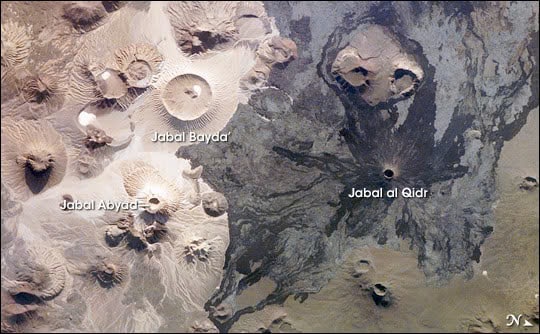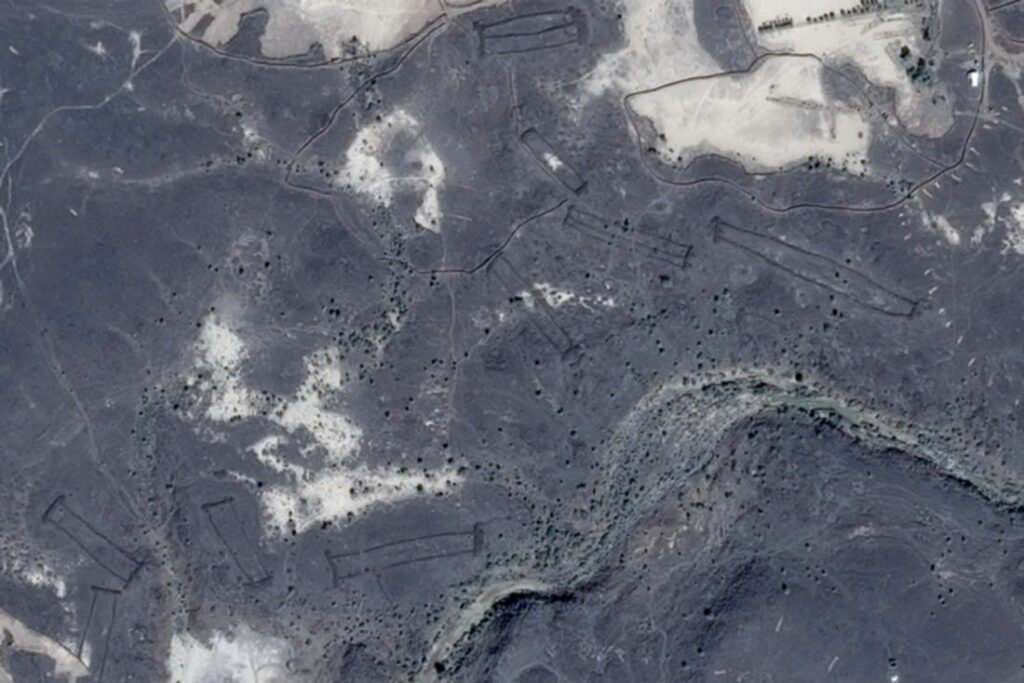A Journey Through Time: Discovering 9,000-Year-Old Neolithic Structures

In the heart of Saudi Arabia lies a landscape that seems to belong to another world. The Harrat Khaybar, a vast lava field stretching over 14,000 square kilometers, holds secrets that have puzzled archaeologists for decades. Among its harsh terrain, evidence of human habitation dating back 9,000 years has emerged, challenging our understanding of ancient civilizations.
The Volcanic Crucible: Harrat Khaybar
Located about 137 kilometers northeast of Medina, Harrat Khaybar stands as one of Saudi Arabia’s largest volcanic fields. Formed over five million years of eruptions, with the most recent occurring between 600 and 700 AD, this rugged landscape was once considered one of the most inhospitable places on Earth.
Satellite Revelations: The “Gates of Hell”

It wasn’t until satellite imagery revealed hundreds of ancient structures that the true significance of this area became apparent. These Stone Age walls, built within the volcanic fields, were dubbed the “Gates of Hell” due to their appearance from above – short, thick connecting piles of brick resembling barred gates.
A Tapestry of Ancient Designs
Alongside these gate-like constructions, archaeologists uncovered a rich tapestry of ancient designs:
- “Desert kites”: Stone fences possibly used as animal traps or early attempts at animal domestication
- Circular structures: Dubbed “bullseyes” and “wheels”
- Mustatil: Rectangular structures scattered across the Khaybar and AlUla regions

From Bedouin Legend to Archaeological Wonder
While local Bedouin tribes had long referred to these formations as “works of the old men,” it wasn’t until David Kennedy of the University of Western Australia documented them that they entered the realm of Western archaeology. Kennedy’s work has identified approximately 400 stone walls in the area.
A Greener Past

Dr. Hugh Thomas of the University of Western Australia sheds light on the region’s history: “In the Neolithic period, these areas were significantly greener, with sizeable populations of people and herds of animals moving across these landscapes.” This revelation challenges our perception of Saudi Arabia’s arid regions and their historical significance.
The Khaybar Enigma: Preservation and Mystery

The Khaybar area is now considered “unique” due to the variety of structures and their extraordinary preservation in the arid climate. However, the purpose of these structures remains a mystery. While some theorize they were ritual sites, their true function continues to elude researchers.
As archaeologists delve deeper into the secrets of Saudi Arabia’s “Gates of Hell,” one thing is clear: this ancient landscape holds the key to understanding a chapter of human history that has long been overlooked. The sands of Harrat Khaybar not only preserve the past but also challenge us to reimagine the capabilities and lives of our Neolithic ancestors.

